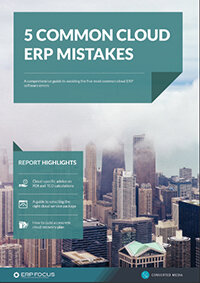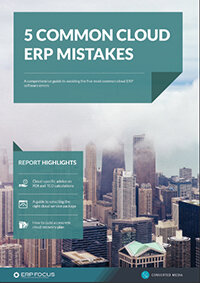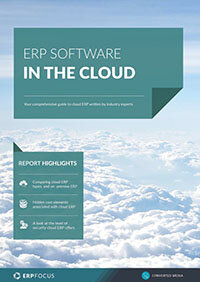Third party data centers explained
The cloud is a great innovation, but there’s a degree of enterprise responsibility involved as well. It’s fine to posit the ‘easy’ migration of on-premise systems and datastores to one or more data-centers somewhere ‘up and out there’. But, at a practical management level, what does that really mean? What systems apply? Where does one’s data reside, and more importantly, what overarching administrative rules, policies, and security risks apply?
Consequently, here’s a little primer on what third party data centers are, how they work, and how they associate themselves when it comes to the ERP environment.
What are third party data centers?
Data centers are secure physical facilities housing groups of networked computing systems necessary to create real-time processing, data distribution, and the archiving and retrieval of work encompassed within remote, large-scale storage repositories. However, these facilities can only exist on the basis of a multitude of core structural and systems elements that collaborate in real-time to resultant information products.
Recommended reading: avoid ruining your ERP project using our guide to the most common cloud ERP mistakes, and how to avoid making them.
To understand just how interdependent data centers are, here is a typical facility pick list including:
- Highly-secure site, encompassing additionally externally-secured building complexes
- Redundant electrical, and current-conditioned, power distribution systems
- Universal data cable infrastructures
- Redundant climate control systems
- Raised-floor system centers, integrated with multiple fire suppression systems
- Gateway and router-bank complexes
- Multiple server complexes
- Multiple data storage systems
- Centrally-located systems monitors throughout the facility
- Office space as required
Where does data come from, and where is it ultimately stored?
While there are hosts of ways that data streams are initially created and migrated across the larger cloud environment, local digital work products, in the form of data streams first move across regionalized ground and/or wireless signal infrastructures.
In turn, these streams are directed to various wide-area switching and gateway facilities; and then on to one or more discrete receiving addresses, i.e. the input side of a data center server farm. At this point any necessary customer or administrative data interactions occur, whether they are manipulated by internal utility or transaction-based applications.
Once the goals of these internal interactions are satisfied, final work products are subsequently pushed across a data center’s internal cabling infrastructure until they ultimately reside in one or more archival storage areas. There these work results can serve as either passive or active elements as a customer desires.
Administration, internal policies, and security elements
In the past data center administration was largely considered to be a manual environment where legions of techs managed data elements within central server/storage complexes. However, the advent of sophisticated administrative automation, along with the employment of innovative management doctrines such as Agile, or DevOps have streamlined data-center processes end-to-end.
Along with the introduction of the aforementioned host of automated administrative systems, non-operational managerial and governance policies, in the form of digitalized rules structures, allow active interaction between systems actions and business requirements in real-time. These innovations simplify what would otherwise be management furballs of enormous proportions.
Finally, while some technologists posit concerns about the central-point-of-failure nature of the cloud and third party data centers, as a factual matter these facilities are generally more, rather than less, secure than other premise-based server/storage environments. At a practical level this is largely driven by the innovations mentioned above at the systems administration and business rules levels, including the interaction of automation where security systems can be monitored in real-time. Any threat penetrations can therefore be remedially acted upon much sooner rather than later.
This value is further extended by universal security systems updating ensuring that every active/passive element in a center is covered holistically. Therefore, data-centers generally offer more, rather than fewer advantages to the ERP community, in addition to enterprise business as a whole.
Free white paper

Five common cloud ERP mistakes
Get your comprehensive guide to avoiding the five most common cloud ERP errors

Featured white papers
-

Five common cloud ERP mistakes
Get your comprehensive guide to avoiding the five most common cloud ERP errors
Download -

Related articles
-

ERP migration steps (your ERP migration checklist)
How to construct the smoothest ERP migration plan possible
-

CMMC Compliance: What Aerospace and Defense Manufacturers Need to Know
Key insights on CMMC compliance, deadlines, and securing DoD contracts with CMMC 2.0 certificatio...
-

4 practical examples of the power of real-time ERP data
Discover the potential of real-time data with these practical examples from a range of industries.

